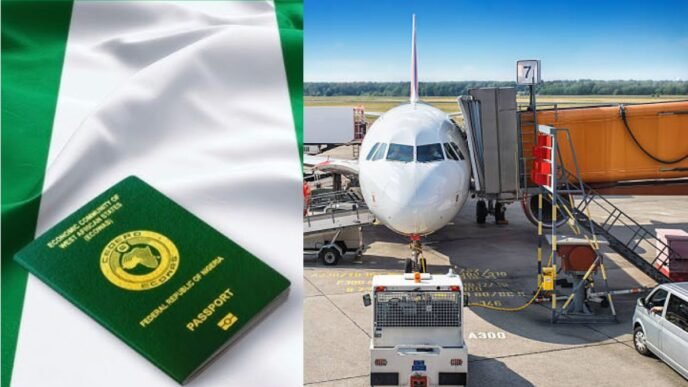The United States Department of Homeland Security (DHS) is preparing to launch a controversial initiative that would grant unaccompanied migrant teenagers a one-time payment of $2,500 if they voluntarily agree to return to their countries of origin. The proposed plan, reported by CNN on Saturday, is part of the Biden administration’s broader efforts to manage unprecedented migration at the U.S.-Mexico border while balancing humanitarian considerations with immigration enforcement.
According to an internal administration memo cited by the outlet, the pilot program would initially target 17-year-old migrants and operate under the supervision of immigration courts. Before any departure is authorized, an immigration judge would be required to approve the minor’s decision, ensuring that the process meets legal and procedural safeguards.
The financial incentive, which would only be disbursed after the migrant’s safe arrival in their home country, is designed to support “reintegration efforts” by helping returnees establish stability in their local communities. Advocates of the scheme argue that the payment could reduce pressure on U.S. detention facilities and offer young migrants a chance to rebuild their lives with financial backing. However, critics have raised concerns about the ethical implications of paying vulnerable minors to return to often unstable or dangerous environments.
Expansion of an Existing Policy
The new DHS initiative builds upon a voluntary return framework introduced during the Trump administration. Under that system, undocumented adults who agreed to self-deportation could receive an “exit bonus” of $1,000 to assist with reestablishing themselves abroad. U.S. Immigration and Customs Enforcement (ICE), which administers the program, has consistently defended it as a cost-effective alternative to prolonged detention and drawn-out deportation proceedings.
ICE officials argue that voluntary returns save government resources by reducing legal, housing, and transportation expenses associated with forced deportations. The agency has framed the financial incentives not only as a humanitarian gesture but also as a pragmatic solution to the logistical challenges of processing thousands of cases annually.
The Biden administration’s proposal would effectively extend this model to minors, nearly tripling the financial incentive in recognition of the vulnerabilities faced by unaccompanied youth migrants.
Migrant Surge at the Border
The development comes amid heightened migration flows at the U.S.-Mexico border, where Customs and Border Protection (CBP) has recorded record numbers of crossings in recent years. Unaccompanied minors make up a significant portion of these encounters, often arriving from Central American countries such as Honduras, Guatemala, and El Salvador, as well as parts of South America.
Many of these teenagers undertake the perilous journey northward to escape poverty, gang violence, and political instability in their home countries. For some, the prospect of reuniting with relatives already living in the United States is another motivating factor.
Under current U.S. law, unaccompanied minors cannot be immediately deported without due process. Instead, they are placed in the care of the Department of Health and Human Services (HHS) while their immigration cases are adjudicated. This system has led to overcrowded shelters and strained resources, fueling political debates over how best to handle the influx.
Supporters Say Initiative Balances Compassion and Enforcement
Proponents of the new initiative argue that the $2,500 payment for teenagers who voluntarily return could strike a balance between compassion and enforcement. By giving minors a choice—rather than forcing them into detention or deportation—the program seeks to uphold humanitarian values while alleviating pressure on federal agencies.
Supporters also note that reintegration funds can have a meaningful impact in regions where economic opportunities are limited. For many families in Central America, $2,500 could cover several months of living expenses, help launch small businesses, or finance education and vocational training.
“Reintegration support is critical to ensuring that returnees don’t immediately feel compelled to migrate again,” one immigration policy analyst explained. “If done properly, this kind of program could reduce repeat migration and contribute to local stability.”
Critics Question the Ethics
Despite its potential benefits, the plan has already attracted criticism from immigrant rights groups and some policymakers. Opponents argue that the initiative risks pressuring vulnerable teenagers into making life-altering decisions they may not fully understand.
“Unaccompanied minors are among the most at-risk populations,” said a representative from a migrant advocacy organization. “Offering them money to leave the U.S. could be seen as coercive, especially when they may be fleeing violence or abuse back home.”
Critics also question whether the payment is sufficient to address the structural issues driving migration in the first place, such as insecurity, weak governance, and lack of opportunities in migrants’ home countries. Without robust reintegration programs on the ground, some fear that returned youths could fall back into cycles of poverty or become vulnerable to recruitment by criminal organizations.
Immigration Judges as Gatekeepers
One safeguard built into the program is the requirement for approval by an immigration judge before a minor can participate. The aim is to ensure that each decision is made freely and with full awareness of the consequences. Judges would be tasked with determining whether the teenager understands the terms of the program and whether returning poses any immediate danger to their safety.
However, skeptics argue that court oversight alone may not be enough. “Even with judicial review, the power imbalance is enormous,” said one legal expert. “A 17-year-old facing the complexities of U.S. immigration law may not feel they have any real choice.”
Political Reactions
The proposal is likely to spark sharp debate in Washington, where immigration remains one of the most polarizing political issues. Republican lawmakers may criticize the Biden administration for offering what they see as taxpayer-funded “handouts” to undocumented migrants, while Democrats could be split between supporting humanitarian relief and raising ethical concerns about incentivizing returns.
Already, some conservative commentators have described the initiative as evidence of a “soft-on-immigration” approach, questioning whether such payments might encourage more minors to attempt the journey north in hopes of cashing out. On the other hand, progressive groups argue that the program reflects an attempt to humanize immigration policy and reduce the harm caused by detention.
Cost vs. Detention
From a fiscal standpoint, DHS has framed the initiative as a cost-saving measure. Detaining minors for months or years while their cases move through immigration courts is expensive, requiring food, housing, medical care, and educational services. By contrast, a one-time $2,500 payment could represent a fraction of those costs.
According to ICE estimates, the average daily cost of detaining an individual is over $150. For minors who often spend extended periods in custody, those expenses quickly add up. Advocates of the voluntary return model contend that offering reintegration funds is not only more humane but also more fiscally responsible.
Looking Ahead
As DHS prepares to roll out the pilot program, questions remain about its long-term viability and broader implications. Will the payments genuinely help teenagers reintegrate into their home countries, or will they prove to be temporary stopgaps? Can judicial oversight ensure that minors are making informed choices, or will critics’ fears of coercion be borne out?
What is certain is that the initiative underscores the ongoing struggle of U.S. policymakers to find sustainable solutions to migration challenges. With the 2024 election season highlighting immigration as a top voter concern, the debate over the program’s fairness, effectiveness, and ethics is likely to intensify in the months ahead.
For now, the DHS plan represents a bold—and controversial—attempt to reimagine how the U.S. approaches unaccompanied minors at the border. Whether it succeeds or fails will depend not only on its implementation but also on the broader political and humanitarian context in which it unfolds.














